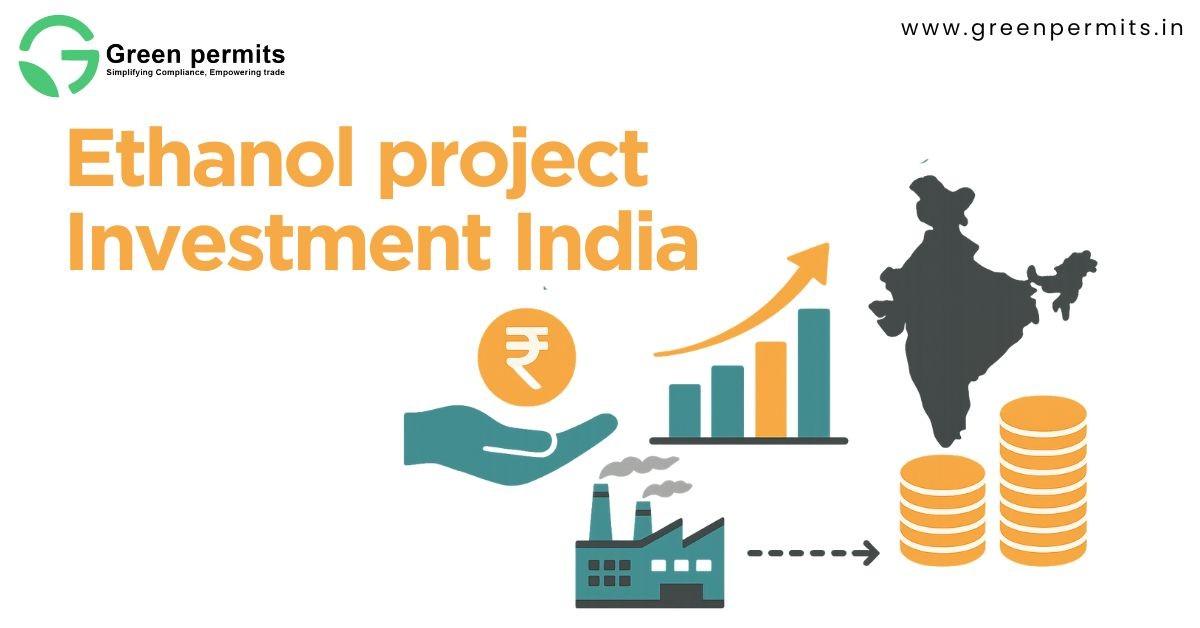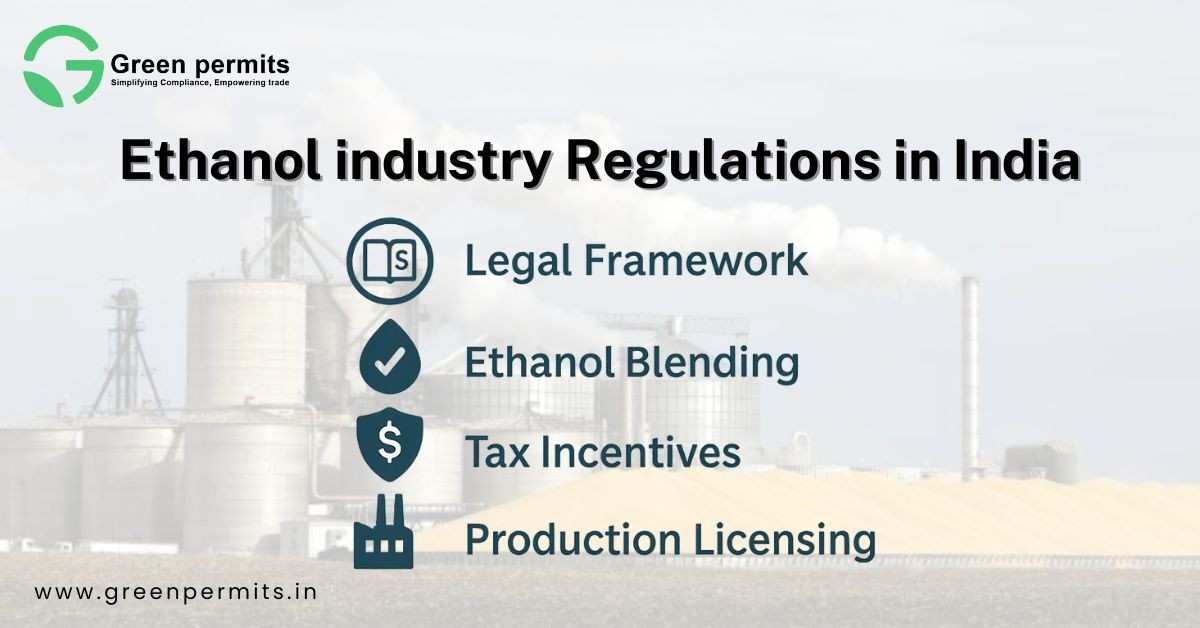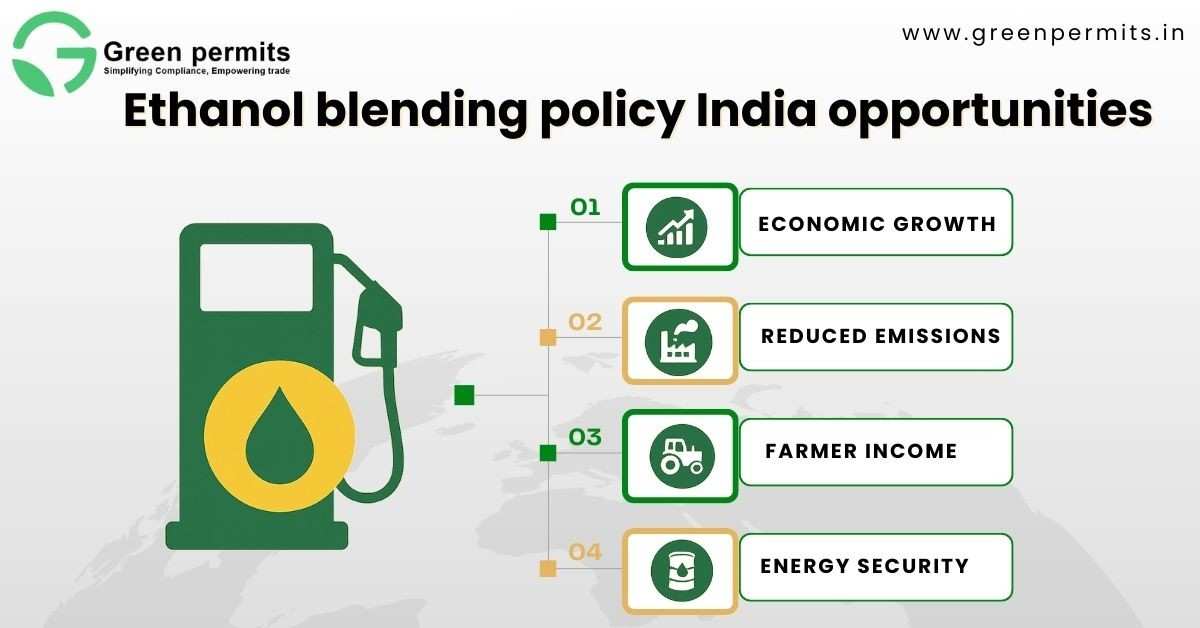India is in the middle of a clean energy shift, and ethanol is leading that change. With the government targeting 20% ethanol blending with petrol by 2025, the opportunity is no longer a future dream — it’s happening now. For investors, mill owners, and entrepreneurs, ethanol is not just about sustainability; it’s also about profitability.
Oil Marketing Companies (OMCs) are buying ethanol in bulk, state governments are offering subsidies, and financial institutions are providing soft loans. Put simply, the demand is guaranteed, and the support system is in place. The key question is: what does the return on investment (ROI) look like, and how long will it take to recover costs?
In this blog, we’ll walk you through India’s ethanol market, project investment costs, ROI expectations, payback periods, subsidies, and compliance steps — with case studies, tables, and checklists to help you make an informed decision.
India’s Ethanol Policy & Market Landscape
India’s Ethanol Blending Program (EBP) is the backbone of the sector. The policy is designed to reduce crude oil imports, cut carbon emissions, and create rural jobs. For investors, this translates into long-term market stability.
- Government Target: 20% blending by 2025.
- Production Growth: India produced over 600 crore litres of ethanol in 2023, a 45% jump from 2022.
- Procurement: OMCs like IOCL, BPCL, and HPCL invite tenders regularly, ensuring producers have ready buyers.
- Feedstock Flexibility: Beyond molasses, grain and 2G ethanol are encouraged to balance feedstock risks.
- Policy Push: Interest subvention, viability gap funding (VGF), and tax relaxations add to profitability.
For an investor, this means less guesswork. Ethanol isn’t a “maybe market” — it’s a government-backed, demand-assured business.
Types of Ethanol Plants & Feedstocks
When planning an ethanol project, one of the first decisions is choosing the feedstock. Each option has its own investment profile, payback timeline, and risks.
1. Molasses-based Ethanol
- Traditional and widely used.
- Lower CapEx, faster payback.
- Heavily tied to sugarcane cycles.
2. Grain-based Ethanol
- Uses maize, rice, and surplus grains.
- Higher CapEx than molasses but ensures year-round operations.
- Attractive for regions with grain surplus.
3. 2G Ethanol (Biomass-based)
- Converts crop residues like rice husk, wheat straw, and bagasse into fuel.
- Very high CapEx and technology-heavy.
- Sustainability advantage, but longer payback.
Comparison Table: Plant Types
| Plant Type | CapEx (₹/KLPD) | Feedstock | Typical Payback | Key Challenges |
|---|---|---|---|---|
| Molasses | ₹90–110 Cr | Sugarcane by-product | 3–4 years | Dependent on cane supply |
| Grain | ₹120–150 Cr | Maize, broken rice | 4–5 years | Feedstock price volatility |
| 2G Ethanol | ₹400–600 Cr | Crop residues, agri waste | 6–8 years | High CapEx, tech maturity |
Capital Investment, Operating Costs & Returns
Investors often ask: What will it cost, and what will I earn? Let’s break it down.
Capital Expenditure (CapEx)
- Land & Civil Works
- Distillation, fermentation & storage machinery
- Utilities (boilers, water treatment, effluent treatment)
- Regulatory & compliance fees
Operating Expenditure (OpEx)
- Feedstock (60–70% of costs).
- Chemicals, enzymes, and yeast.
- Manpower, power, and water.
- Maintenance & compliance reporting.
Mini Case Study
A grain mill in Uttar Pradesh set up a 60 KLPD ethanol unit with an investment of ₹150 Cr. With OMC contracts at ~₹60/litre, the project achieved payback in 4 years and delivered ROI of 18–22% annually.
Key Insights:
- ROI ranges 15–25%, depending on scale and efficiency.
- Molasses & grain plants: Payback in 3–5 years.
- 2G ethanol plants: Payback in 6–8 years.
- Larger plants achieve faster recovery due to economies of scale.
Subsidies, Incentives & Financing Options
One of the strongest drivers for ethanol projects is the financial cushion offered by the government.
- Interest Subvention Scheme: Up to 6% reduction in loan interest.
- PM JI-VAN Yojana (2G Ethanol): Viability Gap Funding up to ₹150 Cr.
- NABARD & SIDBI: Refinance facilities for ethanol loans.
- State Incentives: Excise duty rebates, land support, and tax breaks.
- OMC Contracts: Guaranteed off-take ensures assured revenue.
With these schemes, the payback period often shortens by 1–2 years, significantly improving ROI.
Regulatory & Compliance Roadmap
Setting up an ethanol plant in India requires multiple approvals. Here’s a clear checklist:
Step-by-Step Checklist:
- Land & DPR – Select site, prepare Detailed Project Report.
- Consent to Establish (CTE) – From State Pollution Control Board (SPCB).
- Environmental Clearance (EC) – From MoEFCC/SEIAA.
- CPCB/SPCB Registrations – For effluent & emissions.
- BIS Certification – To meet quality standards for fuel ethanol.
- Excise License – Essential for production, storage, and sale.
- Consent to Operate (CTO) – Final go-ahead after plant commissioning.
Typical Timeline: 12–18 months from DPR submission to commissioning.
Risks, Challenges & Sustainability
No investment is risk-free, and ethanol has its share of challenges.
Risks
- Feedstock Dependency: Sugar cycles and grain price fluctuations.
- Policy Shifts: Changes in subsidies or OMC procurement norms.
- Operational Risks: Effluent treatment and compliance delays.
Sustainability Gains
- Carbon Savings: 1 litre of ethanol saves ~2.7 kg CO₂ compared to petrol.
- Circular Economy: 2G ethanol reduces stubble burning by using agri waste.
- ESG Friendly: Efficient plants improve water use and energy performance, enhancing long-term credibility.
Conclusion
Ethanol is more than just a government program — it’s a business opportunity with real financial returns. With ROI often in the 15–25% range and payback periods as low as 3–5 years, ethanol projects stand out as one of the most promising renewable energy investments in India today.
But profitability isn’t automatic. It depends on the right feedstock, a carefully prepared DPR, timely regulatory approvals, and smart use of subsidies. Investors who plan properly and take expert guidance can avoid delays and reach break-even much faster.
At Green Permits, we specialize in making this process simple — from feasibility studies and DPRs to CPCB/SPCB approvals, BIS certifications, and excise licensing.
👉 Book a Consultation for Ethanol Plant Setup and let us guide you from idea to execution.
📞 Call: +91 78350 06182
📧 Email: wecare@greenpermits.in
FAQs
A 30–40 KLPD molasses plant usually costs ₹90–100 Cr, while a grain-based plant of similar size costs ₹120–150 Cr.
ROI generally ranges between 15–25%, depending on plant size, efficiency, and feedstock.
Molasses plants: 3–4 years.
Grain plants: 4–5 years.
2G ethanol plants: 6–8 years.
Interest subvention (up to 6%), viability gap funding (PM JI-VAN), NABARD/SIDBI refinance, and state excise rebates.
CTE, EC, CPCB/SPCB registrations, BIS certification, excise license, and CTO.
Yes. OMCs issue regular tenders, providing long-term buyers and stable pricing.









